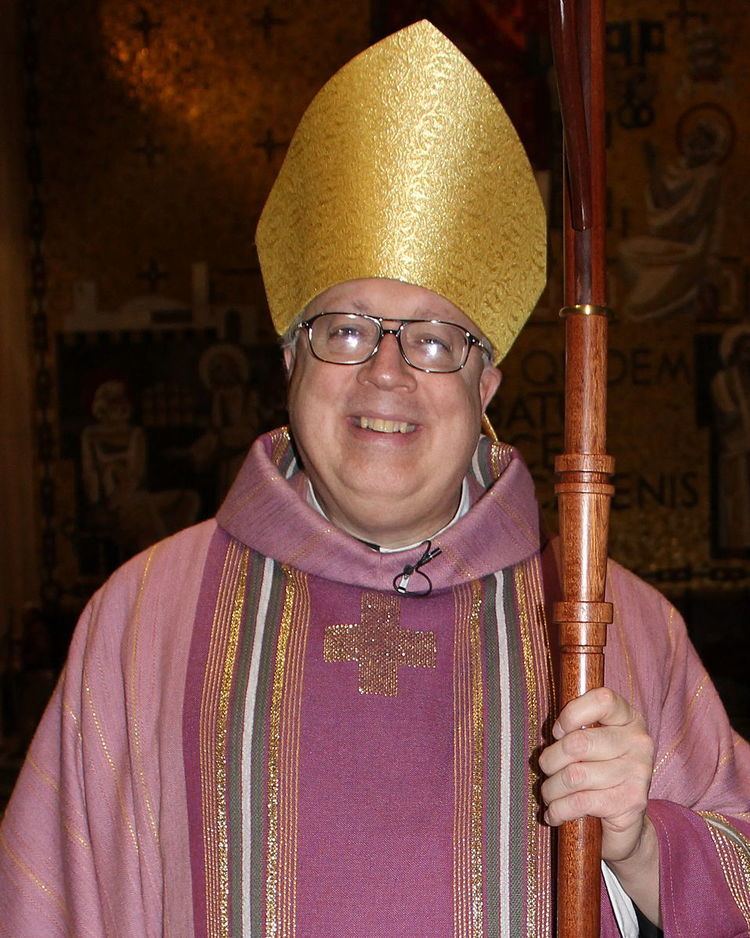 | ||
Laetare Sunday (/lɛˈtɑːrɛ/), so called from the incipit of the Introit at Mass, "Laetare Jerusalem" ("Rejoice, O Jerusalem"), from Isaiah 66:10, is a name often used to denote the fourth Sunday of the season of Lent in the Western Christian liturgical calendar.
Contents
History
The term "Laetare Sunday" is used by most western rite liturgical traditions (including the Roman Catholic and Anglican churches) and by some Protestant denominations with western-rite origins. The word translates from the Latin laetare, the singular imperative of laetari: "to rejoice." Laetare opens the traditional mass introit of the day.
The full Introit reads:
"Laetare Jerusalem: et conventum facite omnes qui diligitis eam: gaudete cum laetitia, qui in tristitia fuistis: ut exsultetis, et satiemini ab uberibus consolationis vestrae. Psalm: Laetatus sum in his quae dicta sunt mihi: in domum Domini ibimus."
"Rejoice, O Jerusalem: and come together all you that love her: rejoice with joy, you that have been in sorrow: that you may exult and be filled from the breasts of your consolation. Psalm: I rejoiced when they said to me: 'we shall go into God's House!'"
Alternative names
This Sunday is currently also known as Mothering Sunday, Refreshment Sunday, mid-Lent Sunday (in French mi-carême) and Rose Sunday (either because the golden rose (sent by Popes to Catholic sovereigns) used to be blessed at this time, or because the use of rose-colored (rather than violet) vestments was permitted on this day).
Historically it was also known as "the Sunday of the Five Loaves," from the traditional Gospel reading for the day, the story of the miracle of the loaves and fishes. The story, before the adoption of the modern "common" lectionaries, was the Gospel reading for this Sunday in the Lutheran, Anglican, Roman Catholic and Old Catholic churches.
The station at Rome was on this day made at the church of S. Croce in Gerusalemme, one of the seven chief basilicas; the Golden Rose, sent by Popes to Catholic sovereigns, used to be blessed at this time and for this reason the day was sometimes called "Dominica de Rosa".
Laetare traditions
In the Roman Catholic, Anglican, Lutheran, Old Catholic and some Protestant traditions, flowers may appear on the high altar and the organ may be played as a solo instrument. Priests are given the option to wear rose-colored vestments at Mass held on this day in place of the violet vestments normally worn during Lent. The term "rose" is used to describe this lighter shade of the color violet in the Roman Catholic Church. In the western liturgical system, purple is the colour of Lenten penance, while white is the colour of feast days. Rose is the color of Laetare as the color obtained naturally by mixing purple and white.
It is a day of relaxation from normal Lenten rigours; a day of hope with Easter at last within sight. Traditionally, weddings (otherwise banned during Lent) could be performed on this day, and servants were released from service for the day to visit their mothers (hence 'Mothering Sunday').
The Lenten fast is allowed to be broken, according to Roman Catholic practice, from nightfall on Laetare Eve until sundown on Laetare Sunday. Many people break the Lenten fast with foods and beverages which are the rose colour of the feast, such as strawberry-based products and cream soda.
Date
Laetare Sunday is exactly 21 days before Easter Sunday, a moveable feast based on the cycles of the moon. The date can be any between 1 March and 4 April inclusive; occurrence in April is considered to be uncommon; the last occurrence was on 3 April 2011 and the next will be on 4 April 2038, after which it will not occur again until 1 April 2057 – occurrences in April are printed in the below list in bold type.
Laetare Sunday occurs on these dates:
